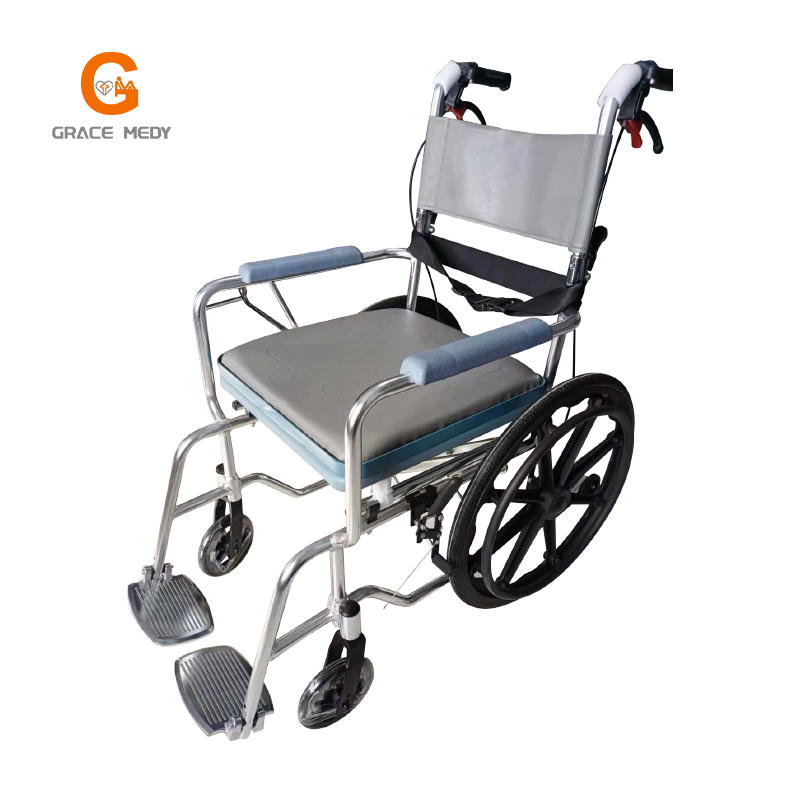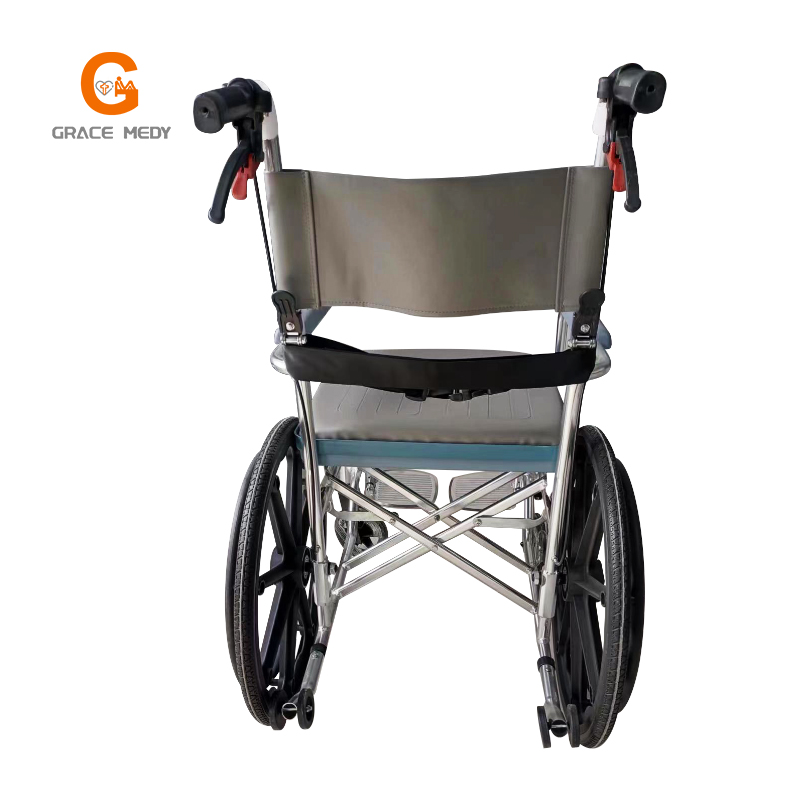Do you know how the surface of the aluminum alloy wheelchair is treated?
Generally divided into anodic oxidation and conductive oxidation
What are the benefits of anodizing aluminum alloys?
In order to overcome the defects of aluminum alloy surface hardness and wear resistance, expand the application range and prolong the service life, surface treatment technology has become an indispensable part in the use of aluminum alloy. The following wheelchair is our aluminum alloy anodized wheelchair. The metal oxide film changes the surface state and properties, such as surface coloring, improves corrosion resistance, enhances wear resistance and hardness, and protects the metal surface.
The thickness of the oxide film obtained by anodic oxidation treatment is generally 5-20v m, and the thickness of the hard anodized film can reach 60-2500m. The film layer also has the following characteristics:
(1) Higher hardness. The hardness of pure aluminum oxide film is higher than that of aluminum alloy oxide film. Usually, its hardness is related to the alloy composition of aluminum and the technical conditions of the electrolyte during anodic oxidation. The anodic oxide film is not only harder High, and has good wear resistance. Especially the porous oxide film on the surface has the ability to absorb lubricants, and can further improve the wear resistance of the surface.
(2) It has high corrosion resistance. This is due to the high chemical stability of the anodized film. After testing, the anodized film of pure aluminum has better corrosion resistance than the anodized film of aluminum alloy. This is because the alloy Composition inclusions or the formation of metal compounds cannot be oxidized or dissolved, so that the oxide film is discontinuous or voids are generated, thereby greatly reducing the corrosion resistance of the oxide film. Therefore, the film obtained after anodic oxidation must generally be sealed before it can improve its corrosion resistance.
(3) Strong adsorption capacity. The anodized film of aluminum and aluminum alloy has a porous structure and has a strong adsorption capacity, so filling the pores with various pigments, lubricants, resins, etc. can further improve the protection of aluminum products , insulation, wear resistance and decorative properties.
(4) It has good insulation performance. The anodized film of aluminum and aluminum alloy no longer has the conductive properties of metal, and has become a good insulating material. (5) The heat insulation and heat resistance performance is strong. This is because the anodized film The thermal conductivity is much lower than that of pure aluminum. The anodized film can withstand a temperature of about 1500 ° C, while pure aluminum can only withstand 660 ° C. In summary, aluminum and aluminum alloys are chemically oxidized, especially after anodic oxidation. The oxide film formed on its surface has good protection and decoration characteristics. Therefore, it is widely used in aviation, electrical, electronic, mechanical manufacturing and light industry.
The difference between anodic oxidation and conductive oxidation
1. Conductive oxidation is carried out under the condition of high voltage, which is an electrochemical reaction process; while anodic oxidation does not require electricity, it only needs to be soaked in liquid medicine, it is a pure chemical reaction.
2. Anodic oxidation takes a long time, usually tens of minutes, while conductive oxidation only takes a few tens of seconds.
3. The film produced by anodic oxidation has several microns to dozens of microns, and is hard and wear-resistant; the film produced by conductive oxidation is only 0.01-0.15 microns, and the wear resistance is not very good, but it can conduct electricity and resist atmospheric corrosion. That’s the good thing about it.
4. The oxide film is originally non-conductive, but because the film formed by conductive oxidation is really very thin, it is conductive.
Post time: Mar-29-2023




